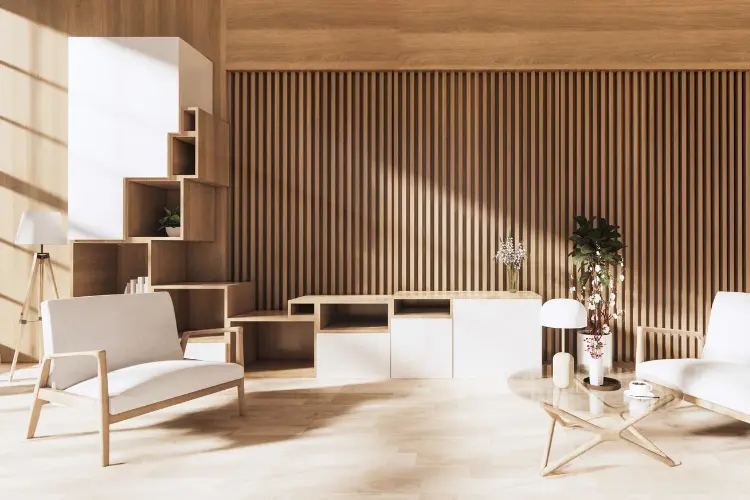As an interior designer, you have a vision for how you want a space to look and feel. You carefully select colors, textures, furniture, and accessories that will create a cohesive and aesthetically pleasing environment. However, one aspect that is often overlooked is the importance of lighting. Lighting is a critical component in any design, and it can make or break the overall ambiance and functionality of a space.

The purpose of this blog is to highlight the vital role of lighting in interior design and provide tips and techniques to help you use lighting effectively in your design:
- Understand the Different Types of Lighting
- Before you can effectively use lighting in your design, it’s essential to understand the different types of lighting available.
- There are three primary types of lighting: ambient, task, and accent.
- Ambient lighting is the general lighting that fills a room with overall illumination.
- This type of lighting is typically achieved with overhead fixtures, such as recessed lighting or chandeliers.
- Task lighting is focused lighting that is used to perform specific tasks, such as reading or cooking.
- This type of lighting is typically achieved with table lamps or under-cabinet lighting.
- Accent lighting is used to highlight specific features or objects in a room, such as artwork or architectural details.
- This type of lighting is typically achieved with spotlights or wall sconces.
- Consider Natural Light
- Natural light is one of the most overlooked and underrated sources of lighting in interior design.
- When used correctly, natural light can create a warm and inviting atmosphere that enhances the overall ambiance of a space.
- If you’re designing a new space, consider the orientation of windows and how they will affect the natural light that enters the room.
- If you’re working with an existing space, consider adding skylights or larger windows to increase the amount of natural light.
- Use LED Lighting
- LED lighting has become increasingly popular in recent years, and for good reason.
- LED lights are energy-efficient, long-lasting, and come in a variety of colors and styles.
- LED lights can be used for ambient, task, and accent lighting, making them a versatile choice for any design.
- LED strip lighting is also a great way to add subtle lighting to shelves, cabinets, or other hard-to-reach areas.
- Create Layers of Lighting
- To create a well-lit space, it’s essential to create layers of lighting.
- This means using a combination of ambient, task, and accent lighting to create a balanced and visually appealing environment.
- Start by determining the primary function of the room and then layer the lighting accordingly.
- For example, in a living room, you may want to use ambient lighting to provide overall illumination, task lighting for reading or working, and accent lighting to highlight artwork or architectural features.
- Consider Mood Lighting
- Mood lighting is a type of lighting that is used to create a specific atmosphere or mood in a room.
- This type of lighting is typically achieved with dimmer switches, colored light bulbs, or adjustable lighting fixtures.
- Mood lighting is an excellent way to create a relaxing and comfortable environment in a bedroom or a dramatic and sophisticated ambiance in a dining room.
- Use Lighting to Highlight Focal Points
- Lighting can also be used to highlight focal points in a room, such as a piece of artwork or a unique architectural feature.
- By drawing attention to these focal points, you can create a sense of drama and interest in the space.
- For example, you might use accent lighting to highlight a beautiful sculpture or use a pendant light to draw attention to a statement piece of furniture.
- Be Mindful of Color Temperature
- Color temperature refers to the hue of a light source, which can range from warm to cool tones.
- Choosing the right color temperature for your design can have a significant impact on the overall look and feel of the space.
- Warm light sources, such as incandescent bulbs, create a cozy and inviting atmosphere, making them ideal for bedrooms and living rooms.
- Cool light sources, such as LED lights, create a bright and energizing environment, making them ideal for kitchens and workspaces.
- Incorporate Lighting into Your Design Plan
- To effectively incorporate lighting into your design plan, it’s essential to consider lighting at the earliest stages of the project.
- This includes working with the architect and contractor to ensure that electrical outlets and switches are in the right locations and that there is adequate space for lighting fixtures.
- By incorporating lighting into your design plan from the beginning, you can ensure that the final result is cohesive, functional, and aesthetically pleasing.
Conclusion
In conclusion, lighting is a crucial component in any interior design project, and it’s essential to use it effectively to create a visually appealing and functional space. By understanding the different types of lighting, considering natural light, using LED lighting, creating layers of lighting, considering mood lighting, using lighting to highlight focal points, being mindful of color temperature, and incorporating lighting into your design plan, you can create a well-lit space that enhances the overall ambiance and functionality of any project.
Remember, good lighting design is not only about creating an attractive space but also about creating a space that supports the health, safety, and well-being of the occupants. So, take your time, and carefully consider all the aspects of lighting design to create a space that is not only beautiful but also functional and comfortable.












